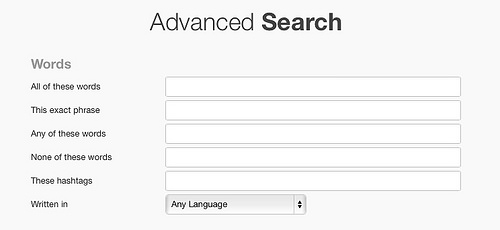The rise of social media has transformed market research from an expensive and time-consuming process into an instant and affordable one. Using data pulled from social networks, even inexperienced researchers can find out what the world really thinks. Here’s what to use, and how to use it:

Twitter’s Advanced Search feature allows you to search all public tweets for keywords, @mentions, #hashtags, geolocations, and even sentiment. If you want to know what people think about your brand, this is a good place to start. It’s free, and you don’t need to leave Twitter to use it.
Then, for the more dedicated researcher, there’s FollowerWonk. Sign in with your Twitter account to analyse your followers and compare your results to your competitors’ data. Use Followerwonk to find new influencers, and sign up for a subscriber account to work out which Tweets gained (or lost) you followers.
Facebook Page Insights has its uses — you can work out the best time to post, the demographics of your fans, and which posts were most popular — but finding out any additional information can be tricky. Facebook polls are great in theory, but Facebook is making it increasingly difficult for businesses to get their posts, including polls, seen.

The idea behind this is that Page owners will then pay Facebook to boost the reach of their posts. This makes market research about as costly and time-consuming as it was before social media, so if you want to know what people think of your brand, Facebook probably isn’t your best bet.
When it comes to using Pinterest for market research, the best tool available to use is the domain search. Type http://www.pinterest.com/source/”[your web domain here]” into your browser, and any images pinned from your website will show up. You’ll be able to see what’s popular, as well as gaining insight into how people perceive your brand. Pay attention to what boards people pin your images to, as well as the comments they leave below.
LinkedIn isn’t as useful for market research as it once was — they closed their B2B market research sample in 2010 — but if your target audience is professionals, LinkedIn might still be of use to you.
Use your status updates to publish survey questions, join groups to create polls, or browse company page statistics to find out more about various industries. If you plan on investigating your competitors, you might want to change your privacy settings to ‘anonymous’ so they won’t know!
There is no ‘best’ social media network for market research, and they all have unique benefits and drawbacks. Ideally, you should be using as many platforms as possible, as the more data you have, the better. Listen to your audience, track trends (you can use Google’s customisable search for this, too) and keep a close eye on your competitors. Your market research strategy might take a little tweaking to get right, and you may have to change things up entirely if you’re not discovering anything new.
- Using Social Networks For Market Research - February 3, 2014
- What Can Groupon Teach Us About Marketing? - January 6, 2014
